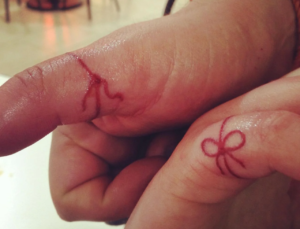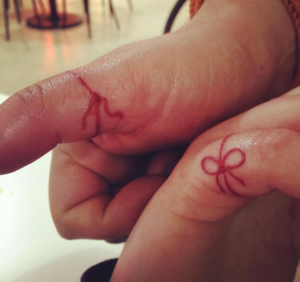Tattoos and body markings hold diverse meanings for different individuals. What may be celebrated in one culture may be deemed inappropriate in another. A symbol with deep significance in one part of the world might appear as mere doodles elsewhere.
It’s reasonable to assume that humans have been using their appearances to express themselves and convey messages for as long as our species has existed.

Unless you’re living on a secluded island, you’re likely accustomed to seeing people adorned with tattoos. While some may regret getting trivial designs in their youth, others carry tattoos with profound meanings, telling stories or honoring customs and traditions.
Personally, I find it intriguing to spot the same tattoo on various people. It sparks curiosity about what the tattoo symbolizes and why the wearer deemed it important enough to etch it permanently onto their skin.

One tattoo that has caught my attention numerous times is the “red string of fate.” While some readers may recognize this small, red tattoo, its symbolic significance may be unknown to many.
After noticing this tattoo on several individuals, I became curious about its meaning. Through some research, I discovered that the red string tattoo is known in Asian cultures as the “red string of fate.” Typically inked on the thumb of a man or the pinky finger of a woman, this tattoo resembles a simple bow with tails, similar to a tied shoelace.

This tattoo carries a symbolic meaning rooted in romance and hope, stemming from a Chinese tale about a matchmaker who knows the destined partners for each person. While the idea of being fated to meet someone isn’t limited to romantic encounters and exists across various cultures, the red string of fate suggests that two people are destined lovers, regardless of circumstances.
For some, this notion brings warmth and comfort, while others may prefer to believe they have full control over their destiny..





